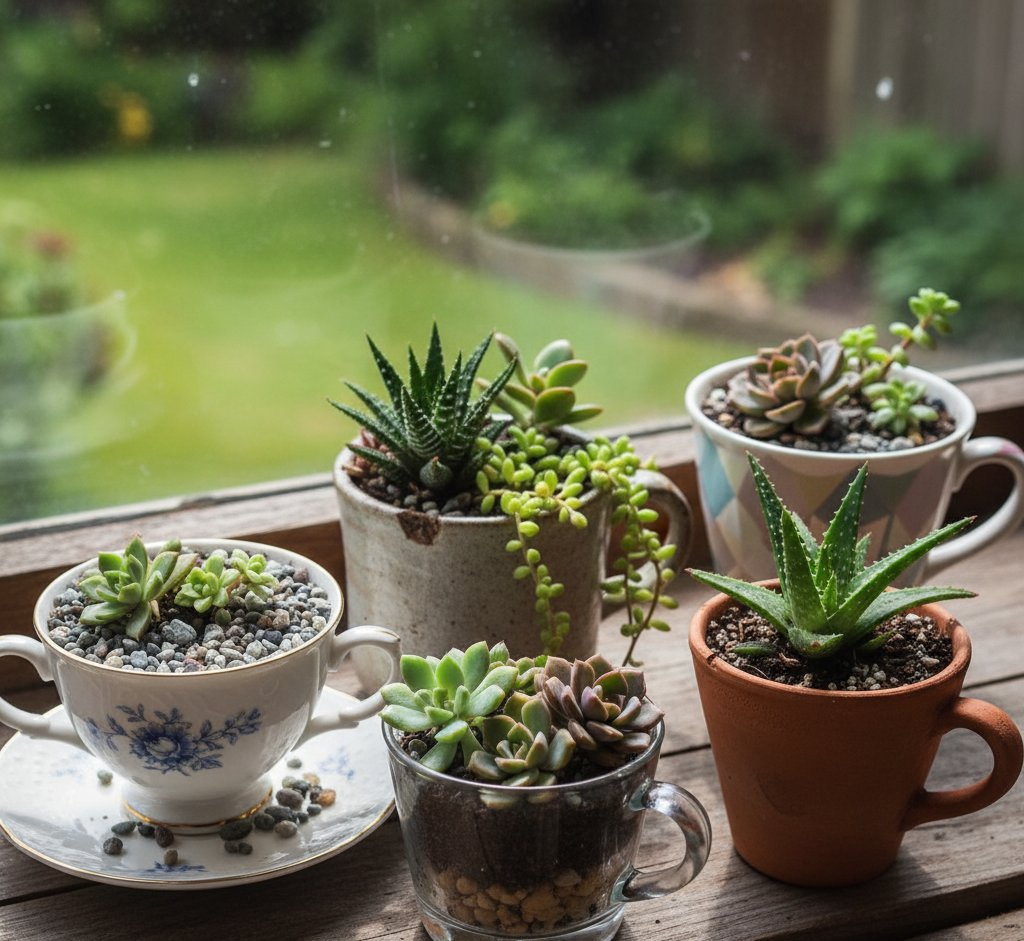Succulent Mini Gardens In Teacups
Tiny gardens can bring big charm to small spaces. When you plant succulents in teacups, you turn ordinary dishes into simple, living décor. A succulent mini garden in a teacup gives you a low-maintenance way to add greenery and style to your home without taking up much space.
You can use vintage china, mismatched mugs, or even chipped cups that no longer serve their original purpose. With just a few materials, well-draining soil, small stones, and healthy succulent cuttings, you can design a compact garden that thrives with little care. These mini gardens look great on windowsills, desks, or coffee tables and make thoughtful handmade gifts.
Creating one is quick and rewarding. You’ll learn how to choose the right teacup, prepare it for planting, and arrange succulents so they stay healthy and attractive. The process is simple enough for beginners but offers plenty of room for creativity.
Key Takeaways
- Succulent teacup gardens turn everyday cups into small, decorative planters.
- Choosing the right teacup and materials helps your plants grow well.
- Simple steps let you build a lasting mini garden with minimal care.
What Are Succulent Mini Gardens In Teacups?
Succulent mini gardens in teacups combine small, hardy plants with decorative containers to create compact displays that fit easily on desks, windowsills, or shelves. You use everyday teacups as planters, turning them into simple, low-maintenance pieces of living décor that require minimal space and care.
Defining Teacup Gardens
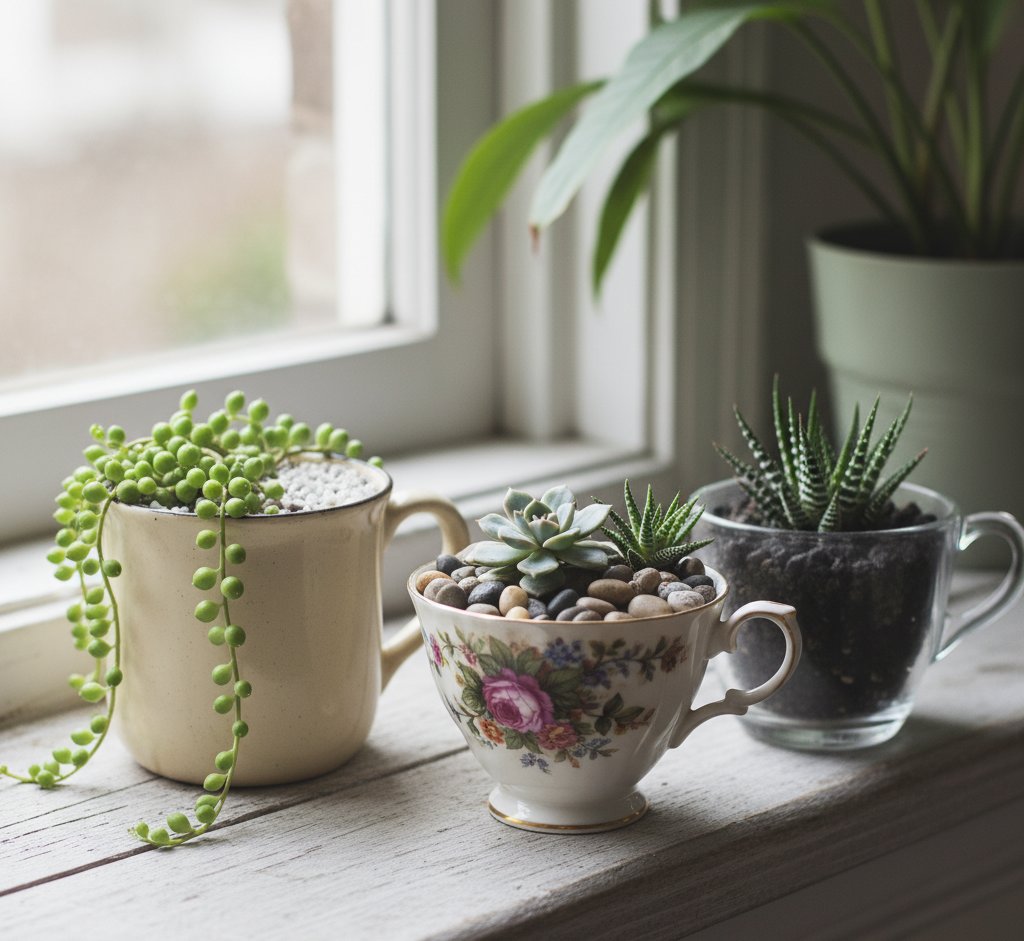
A teacup garden is a small planting arrangement made inside a teacup or coffee mug. It usually features one or more succulents, which are plants known for storing water in their leaves and stems.
You can use old or mismatched teacups, giving them new purpose instead of letting them sit unused. Adding small pebbles or gravel at the bottom helps drainage, since most teacups lack holes.
These mini gardens are ideal for indoor spaces because they need little watering and grow slowly. You can place them near a window with bright, indirect light. Their size makes them easy to move and arrange as part of a tabletop or shelf display.
Benefits of Succulent Teacup Gardens
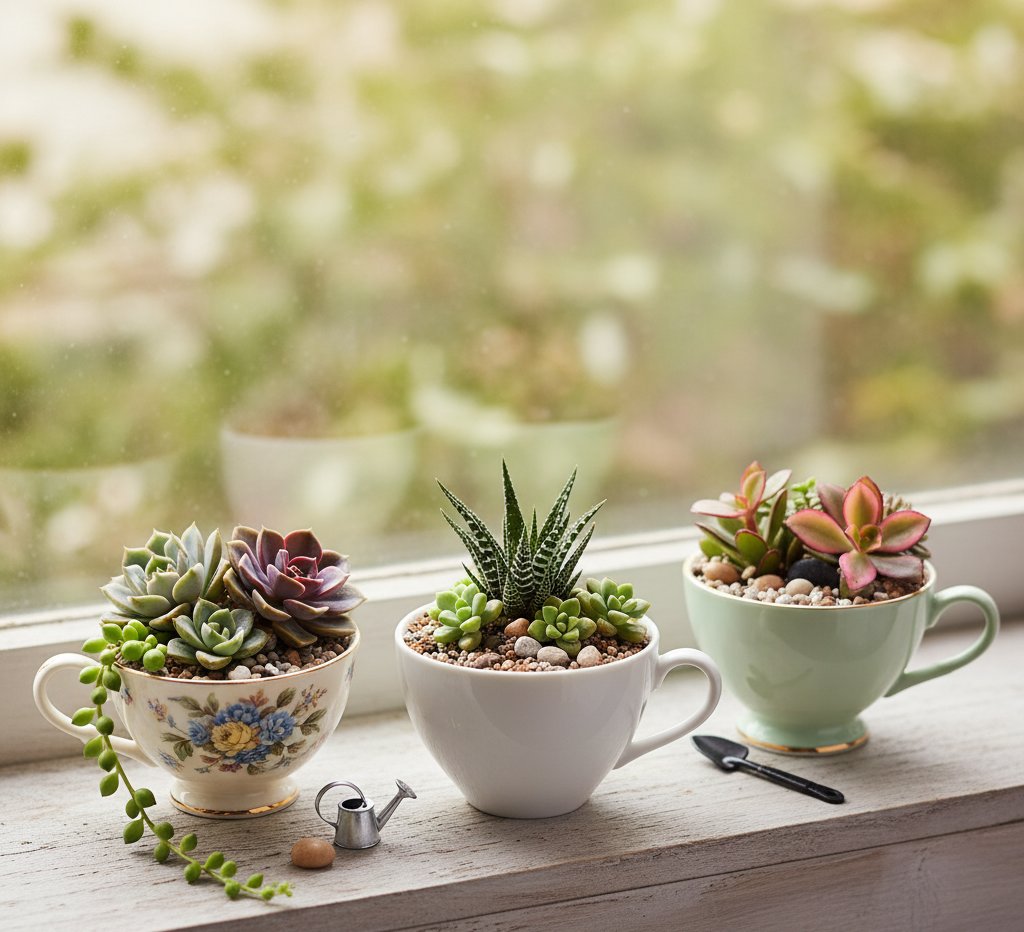
Succulent teacup gardens offer both practical and decorative advantages. They take up little space, making them perfect for apartments, offices, or dorm rooms. You can group several together for a colorful display without crowding your space.
Succulents are low-maintenance plants. They need minimal watering and can thrive in dry indoor air. This makes them a good choice if you want greenery but don’t have time for frequent care.
Teacup gardens also encourage creative reuse. Repurposing old cups reduces waste and adds personality to your décor. You can match cups to your interior style, vintage china for a classic look or plain ceramic for a modern touch.
Popular Succulent Varieties for Teacup Gardens
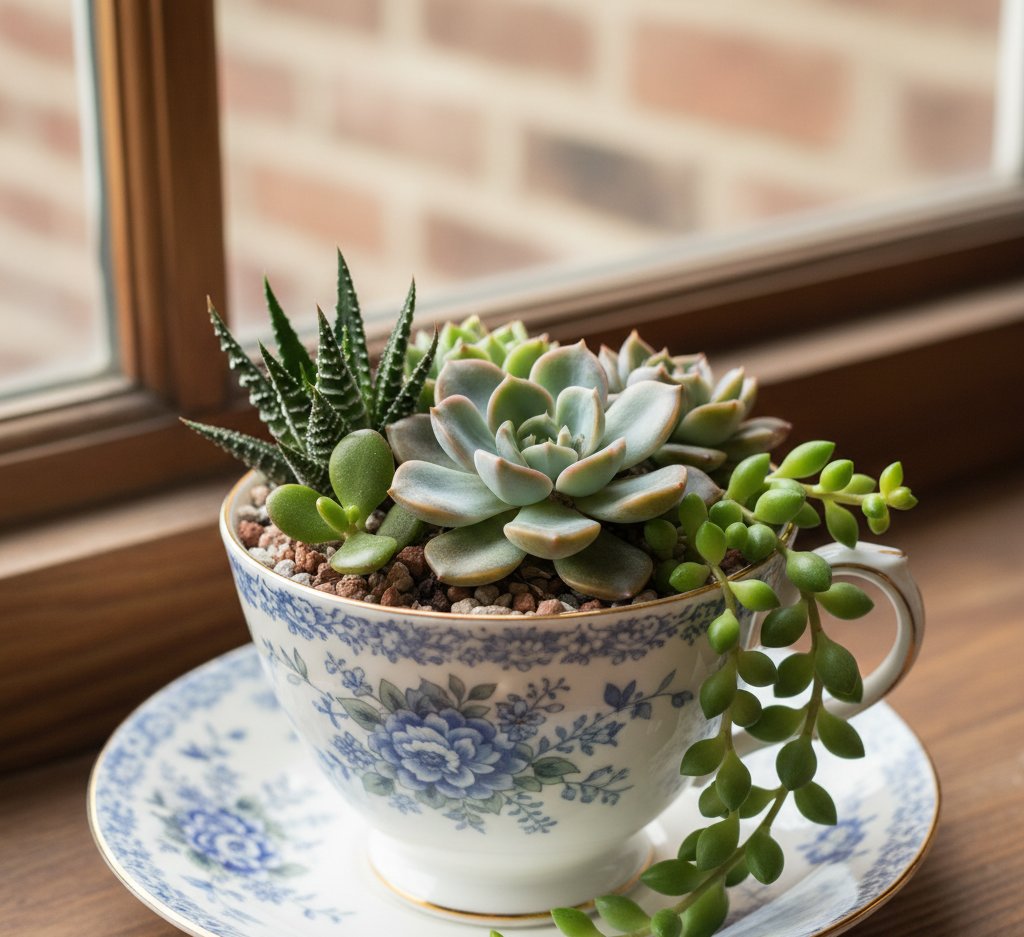
When choosing plants for your succulent teacup garden, look for small species that stay compact. Common options include:
| Succulent | Description | Care Level |
|---|---|---|
| Echeveria | Rosette-shaped leaves in many colors | Easy |
| Haworthiopsis | Spiky, patterned leaves | Easy |
| Sedum | Small trailing stems | Easy |
| Crassula | Thick, rounded leaves | Easy |
These varieties grow slowly and tolerate dry soil well. You can mix types for contrast in color and shape. Use well-draining soil and avoid overwatering to keep your teacup garden healthy.
Choosing The Right Teacup And Materials
Selecting the right teacup, tools, and planting materials helps your succulent mini garden stay healthy and look attractive. The key factors include the teacup’s size and drainage, the type of soil you use, and a few simple supplies that make planting easier.
Selecting Vintage Teacups
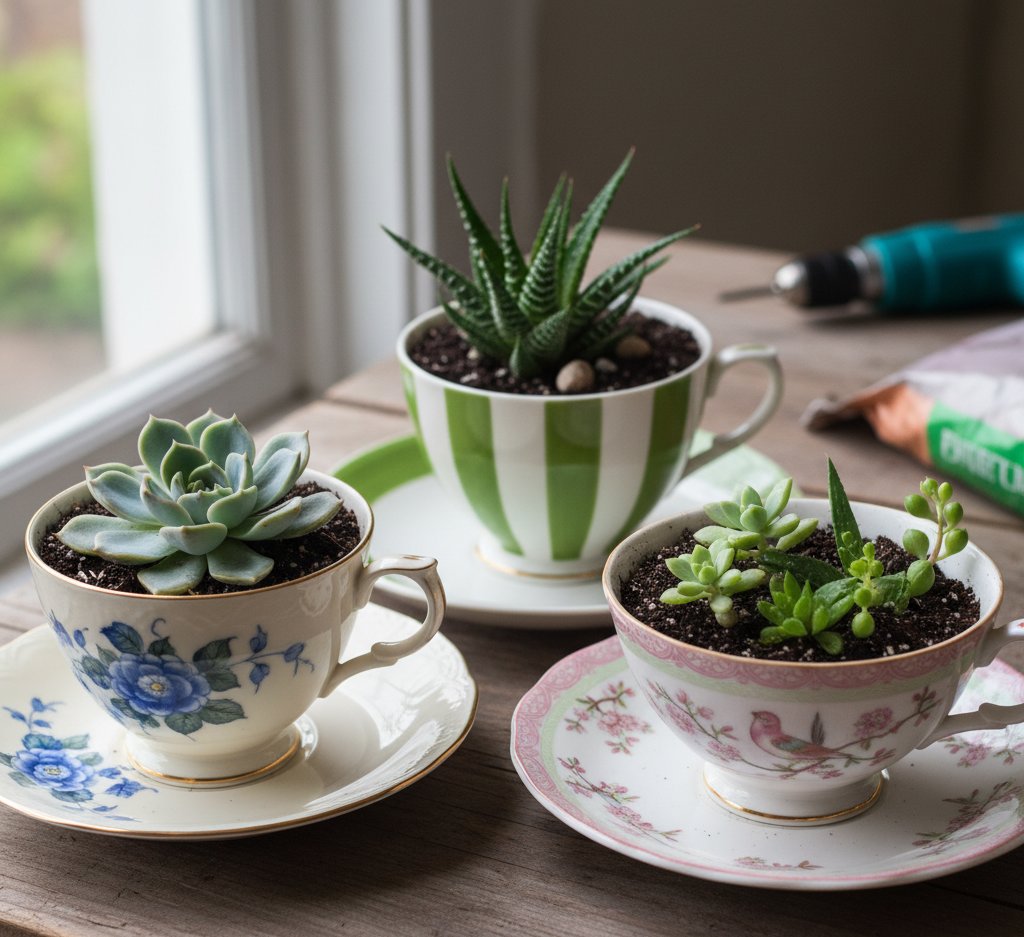
Choose vintage teacups with sturdy porcelain or ceramic bodies. They often feature unique patterns and colors that add charm to your display. Check for cracks or chips that could weaken the cup when filled with soil.
If the teacup does not have a drainage hole, decide whether you want to drill one or use a drainage layer instead. A small hole helps prevent water buildup and root rot.
Match the teacup size to your plant. Shallow cups work well for small succulents like Echeveria or Haworthia, while slightly deeper ones can hold mixed arrangements. Avoid oversized cups that make the plants look sparse.
To enhance presentation, pair the teacup with a matching saucer. The saucer can catch excess water and protect surfaces.
Essential Tools and Supplies
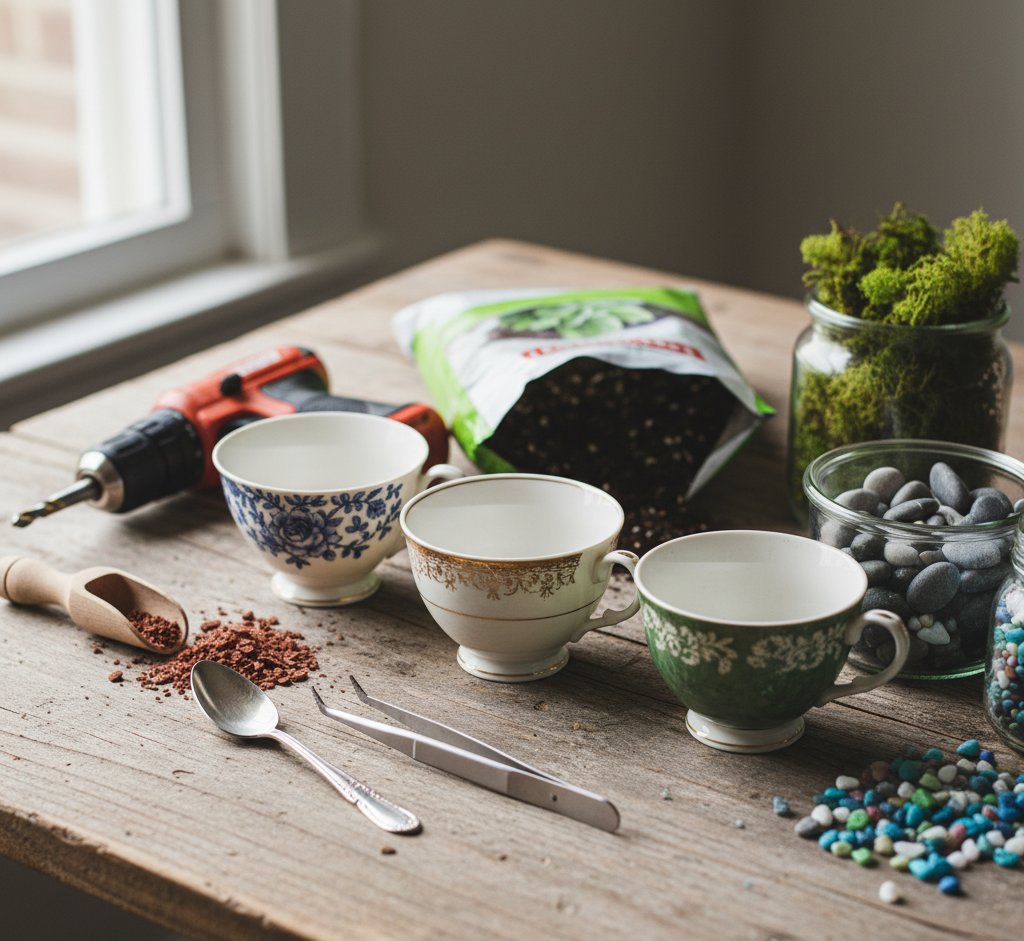
Gather basic tools before you start planting. You will need:
| Item | Purpose |
|---|---|
| Small spoon or scoop | For adding soil neatly |
| Tweezers or tongs | For placing small plants or pebbles |
| Drill with ceramic bit (optional) | For adding drainage holes |
| Decorative moss or gravel | For topping and decoration |
Use decorative moss or colored stones to cover the soil surface. This helps retain moisture and gives a finished look.
Keep a soft cloth nearby to wipe soil from the teacup rim. Clean tools after use to prevent mold or residue buildup.
Soil and Drainage Considerations

Succulents need well-draining soil to prevent root rot. Use a succulent mix that contains coarse sand, perlite, or pumice. Avoid regular potting soil, which holds too much water.
If your teacup lacks a drainage hole, create a base layer of small stones or activated charcoal. This helps absorb excess moisture.
Add soil gradually, leaving space for the plant’s roots and a thin top layer of gravel or decorative moss. Allow the soil to dry between waterings.
Keep the teacup garden in a bright spot with indirect sunlight. Proper drainage and soil choice will keep your mini garden healthy and low-maintenance.
Step-By-Step Guide: Creating A Succulent Mini Garden In A Teacup
You can turn an unused teacup into a small, low-maintenance garden by preparing proper drainage, arranging healthy succulent cuttings, and finishing with decorative materials that keep the design tidy and appealing. Careful setup helps your succulents stay healthy and stable in a small container.
Preparing The Teacup
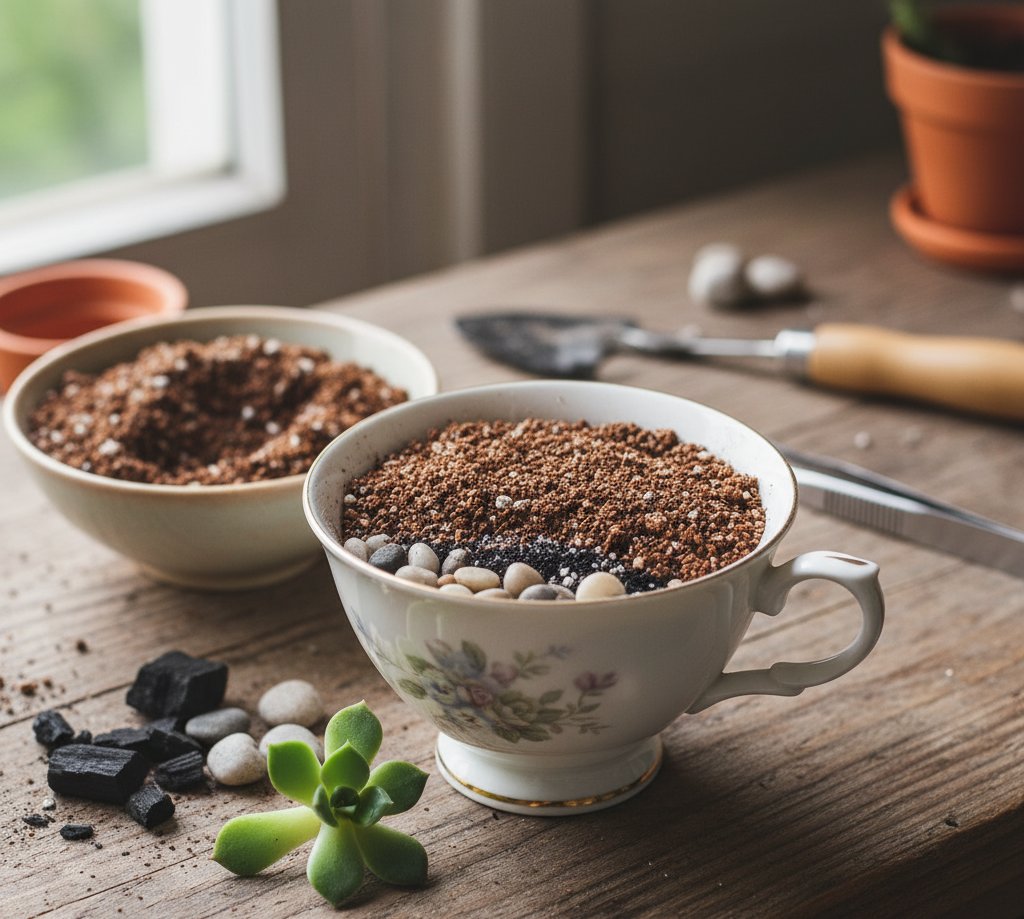
Follow these steps to prepare your teacup for planting succulent cuttings:
- Choose the Container: Select a clean, dry ceramic or porcelain teacup that is approximately 2–4 inches wide.
- Establish Drainage:
- If the cup has no drainage hole, you have two options: carefully drill one using a small ceramic bit, or create a drainage layer by adding a thin layer of gravel or pebbles to the bottom.
- Add Activated Charcoal: Place a small amount of activated charcoal immediately on top of the drainage layer. This helps prevent odors and reduces the risk of mold growth.
- Fill with Soil: Fill the cup about three-quarters full with a quick-draining succulent soil mix. This specialized soil is key to preventing root rot.
- Settle the Soil: Lightly tap the cup against a flat surface to settle the soil and create a level surface. Be careful not to pack the soil too tightly, as you need enough loose space for the succulent roots to spread and take hold.
You are now ready to plant your succulents!
Arranging Succulent Cuttings
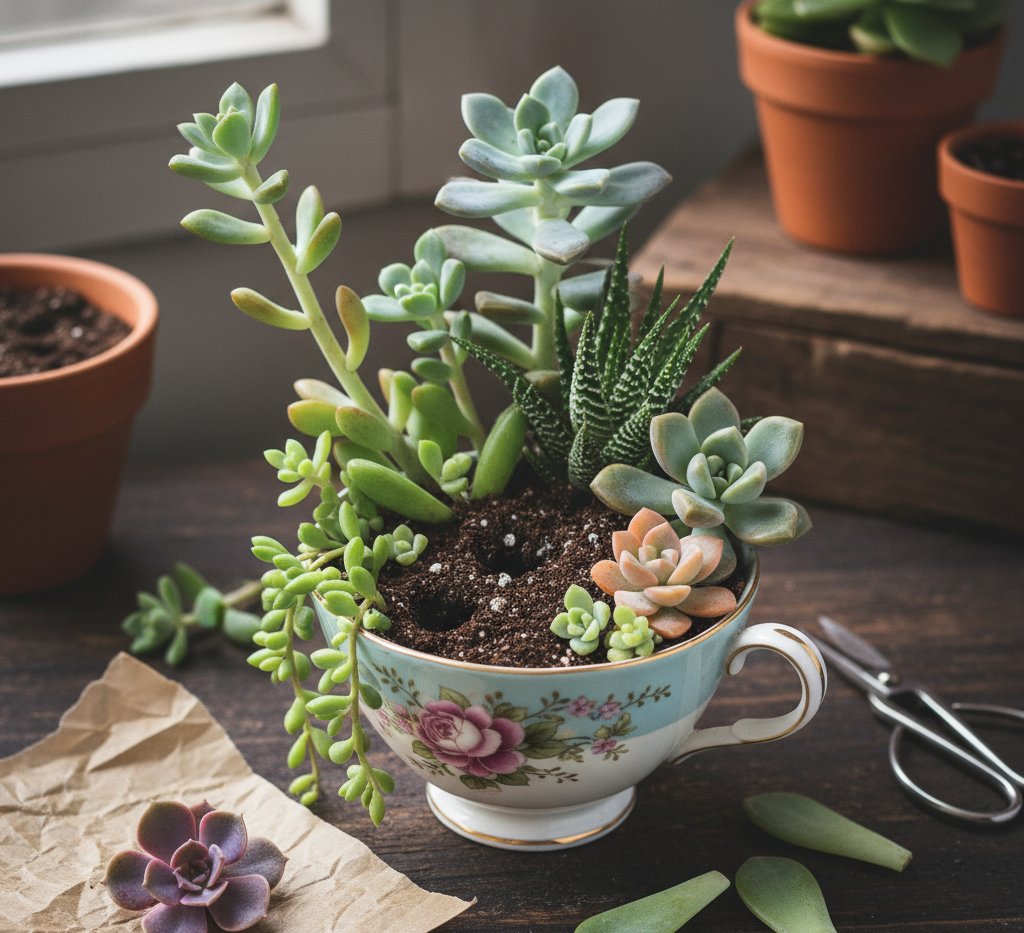
Here are the step-by-step instructions for selecting, planting, and caring for your succulent cuttings.
1. Preparing the Cuttings
- Select Diversity: Choose succulent cuttings that offer variety in color, shape, and size for the best visual appeal. Popular choices include Echeveria, Sedum, and Haworthia.
- Trim and Dry: Trim the stems so they fit comfortably within your container. Allow the cuttings to dry for one or two days before planting. This crucial step lets the cut end callous over, preventing rot.
2. Planting and Arrangement
- Make Holes: Use your fingers or a small spoon to create shallow holes in the soil where each cutting will go.
- Insert Gently: Insert each cutting into its hole, pressing the base just deep enough to ensure it stays upright and secure.
- Create Layers: Arrange your plants for a layered look: place taller cuttings toward the back of the cup and position smaller rosettes closer to the front.
3. Watering and Placement (Aftercare)
- Initial Watering: Wait approximately one week after planting before applying any water. Then, lightly mist the soil or water sparingly.
- Light: Place the teacup garden in an area with bright, indirect light.
- Ongoing Care: Avoid heavy watering. Always wait until the soil is completely dry before watering again to prevent root rot.
Adding Decorative Touches
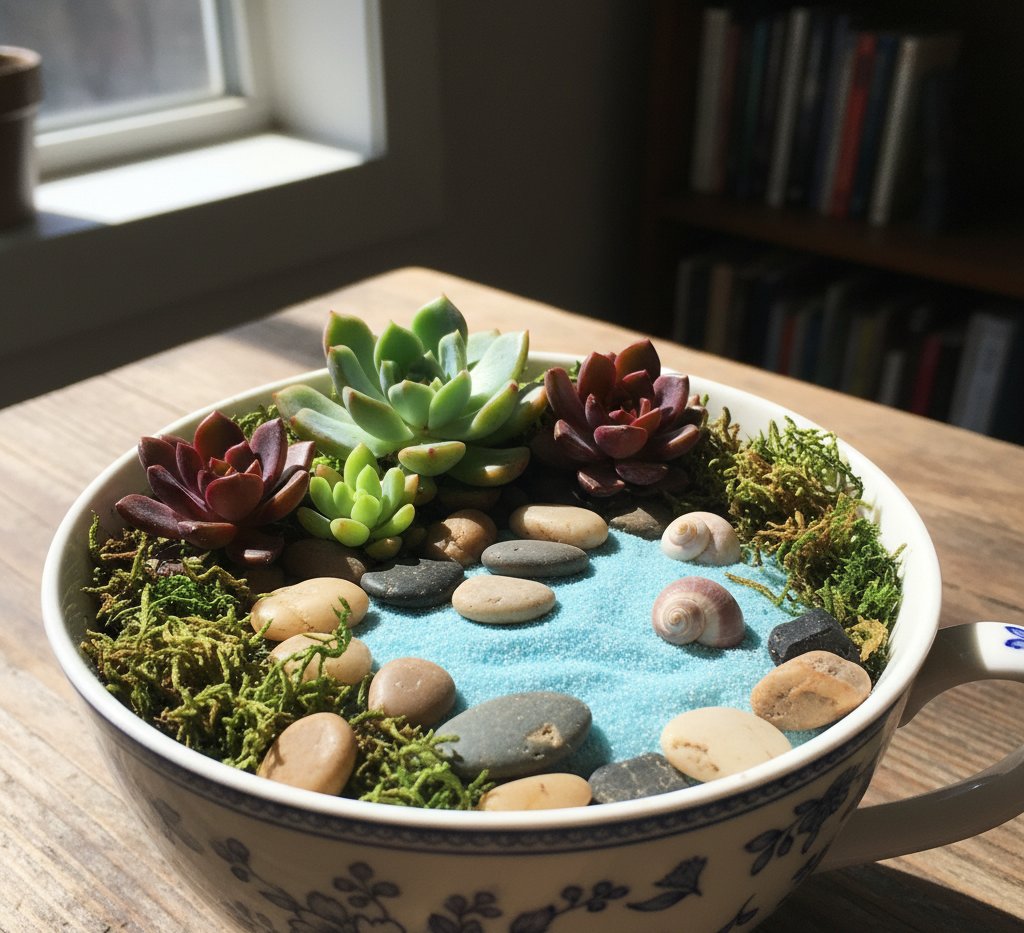
To finish, add decorative moss, small pebbles, or colored sand around the plants. These materials help hold the soil in place and give the garden a clean, finished appearance.
You can also place a few mini stones or shells on top for texture. Choose colors that complement both the succulents and the teacup design.
If you plan to display your succulent teacup garden indoors, wipe the rim and outer surface clean to prevent water stains. Keep it in a bright spot where it can get several hours of filtered sunlight each day.

